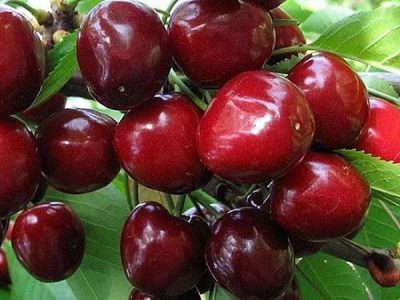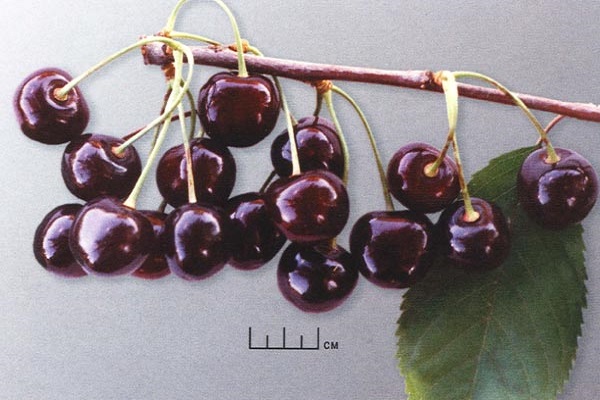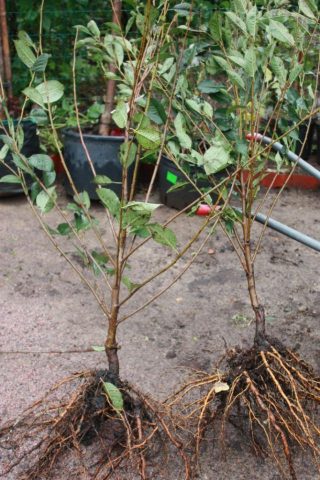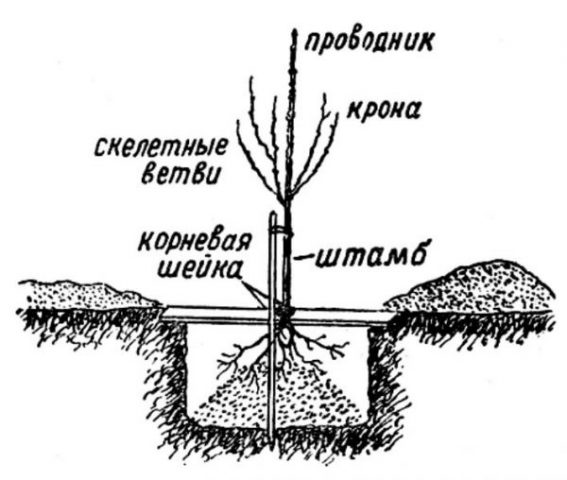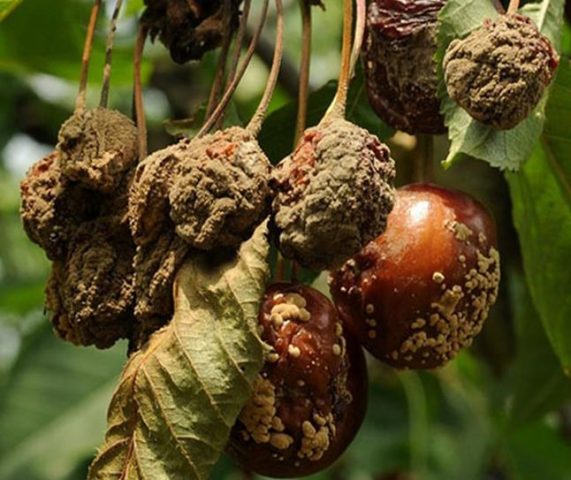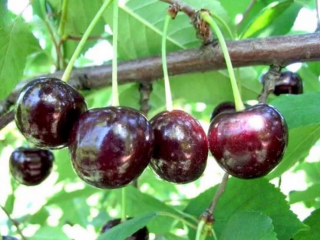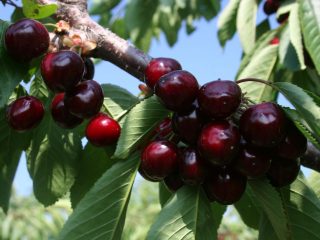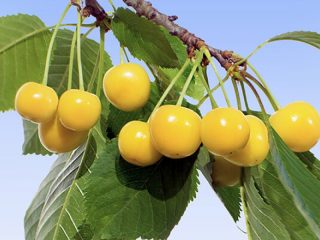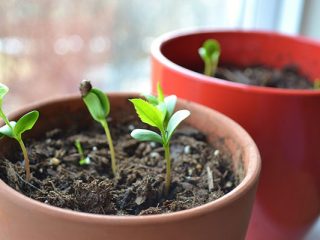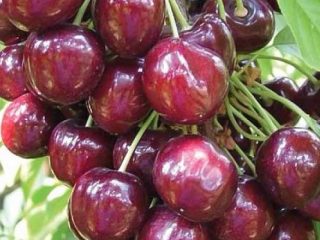Content
The Bryanochka cherry is the brainchild of Russian breeders. Sweet berries have been known to gardeners for a long time. The tree is unpretentious, quite cold-resistant, this cherry is for the northern regions.
History of selection
The Lupin Research Institute, located near Bryansk, is the birthplace of many modern varieties of cherries. The Bryanochka cherry variety was developed here based on the Red Dense cherry. Breeders M.V. Kanshina, L.I. Zueva, A.A. Astakhov worked on its creation. This is a young variety included in the State Register in 2006.
Description of culture
When describing the Bryanochka cherry variety, you need to indicate the following - the tree grows intensively, reaching a height of 3 meters. The crown is quite sparse, pyramidal. The branches are straight, the bark is smooth, brown in color.
Bryanochka's leaf blades are elliptical in shape and pointed. The flowers are collected in a bouquet of three, white, the petals do not touch.
The berries are heart-shaped, slightly flattened on top.Quite large, weighing up to 6 g. The skin and flesh are dark red. The taste is sweet, the maximum tasting score is 5.
Cultivation is recommended in all regions of Russia, except the most northern ones.
Characteristics
It is worth considering the main characteristics of the Bryanochka cherry variety.
Drought resistance, winter hardiness
Cherries require moisture in the soil. To obtain juicy fruits, trees are watered. In dry weather this is done monthly.
The frost resistance of the Bryanochka cherry is high both for the tree itself and for the flower buds.
Pollination, flowering period and ripening time
Cherries are mostly self-fertile plants; they need a pollinator to bear fruit. The best pollinators for Bryanochka cherry varieties Veda, And the way, Tyutchevka.
Productivity, fruiting
After planting the seedlings, the tree bears fruit within 5 years. The harvest from each tree is on average 15-20 kg. It increases every year until the tree begins to age. This comes in 20-25 years.
Area of application of berries
The best use of berries is fresh. For winter consumption, jams, preserves, pie fillings, marmalade and jellies are prepared. Liqueurs and tinctures are delicious.
Resistance to diseases and pests
The cherry variety Bryanochka is slightly susceptible to coccomycosis and klyasterosporiosis. It produces good harvests even in the coldest regions of the country.
Advantages and disadvantages
The advantages of the Bryanochka cherry variety are as follows:
- High-yielding variety.
- Fruits every year.
- Frost-resistant.
- Excellent berry taste.
The disadvantage, like all types of this crop, is that the Bryanochka cherry is self-sterile; it is necessary to plant a certain variety of pollinator nearby.
Landing Features
Growing Bryanochka cherries is no different from other types of cherries.
Recommended timing
Cherry Bryanochka is a late-ripening variety that can be planted in spring and autumn. Autumn planting is carried out in the southern regions 3 weeks before the onset of cold weather.
Still, spring is considered the best time for planting. They begin to plant bushes in April, when the soil has thawed and the buds on the seedlings have not yet awakened.
Choosing a suitable location
For cherries, gentle southern slopes or flat areas with no tall plantings and good lighting are suitable. It is important to exclude the presence of soil water, which has a bad effect on the roots of the plant. The presence of drafts and cold winds will be unpleasant.
What crops can and cannot be planted next to cherries?
Apple and pear trees can be in the same garden as cherries, but at some distance. The powerful roots of these trees suppress cherries. It is necessary to exclude nearby plantings of linden, birch, as well as conifers - spruce and pine. Birch is completely inappropriate in the garden; it draws a lot of moisture from the soil.
Beds of tomatoes, peppers and potatoes located next to the cherry tree will attract harmful insects. Bushes such as blackberries, raspberries, and gooseberries should not be planted nearby. The best neighbors in the garden for cherries are cherries, plums, and honeysuckle.
Selection and preparation of planting material
The Bryanochka cherry seedling is chosen as two years old, with roots about 25 cm long. The seedlings must be healthy, without damage, the height of the bush is about a meter.
Before planting, the roots are dipped in water to enrich them with water.It is good to use a solution of “Kornevin” or “Fitosporin” for disinfection.
Landing algorithm
On prepared and fertilized soil, make holes measuring 70x70 cm and about half a meter deep. A mound of fertile soil is poured into them. The seedling is placed on it, straightening the roots and preventing them from intertwining. Pour some soil, water it, then more soil. They crush it and water it again - about a bucket under the bush. The planting site is mulched with grass or humus.
Plants are planted at a distance of 3 meters. It is advisable to plant several mutually pollinating varieties at the same time. The seedlings will grow and bloom at the same time, which will improve pollination of the Bryanochka cherry and ensure a good harvest of berries.
Subsequent care of the crop
Agrotechnical practices, carried out correctly, can increase crop yields. First of all, you need to water the cherries on time. They do this four times per season:
- Before the buds swell.
- During flowering.
- At the moment of formation of the ovary.
- In the fall for a successful winter.
Of course, everyone does this when the weather is dry. If the summer is rainy, they focus on the condition of the soil.
Fertilization begins from the third year of the tree’s existence. During the growing season and flowering, nitrogen-containing fertilizers are applied. When the fruits are formed and filled, organic matter, phosphorus and potassium fertilizers are required. Before wintering, you should also feed the cherries. To do this, use a complete complex fertilizer.
After watering, it is necessary to loosen the space around the trunk and mulch it with suitable materials.
Formative cherry pruning Bryanochka is made for the first 4 years. When planting, the main shoot is shortened to 60 cm, and then a plant is formed into 3-4 tiers.Each tier should contain 4 skeletal branches. The height of the tree can be adjusted independently to a convenient size.
Important! We must not forget about sanitary pruning in the spring. By removing diseased and damaged branches, the gardener allows the cherry tree to develop freely and avoids unnecessary diseases.
Young plantings of Bryanochka cherries are covered for the first 2-3 years. They wrap the tree with spruce legs, burlap or lutrasil. Peat or sawdust is poured around the trunk. An adult tree does not need winter shelter; it tolerates frosts of 30 degrees.
Pruning and shaping cherries:
Diseases and pests, methods of control and prevention
| Diseases of culture | Description | Methods of disposal |
| Hole spot
| Brown spots appear on the leaves, then holes appear in their place. The shoots crack and gum flows from them | All affected wood elements are cut out and burned. Dig up the soil around the tree. Spray the tree and soil with copper sulfate or Bordeaux mixture at 3% |
| Gray rot (moniliosis) | Brown spots appear on the leaves. The fruits are covered with a rotten coating. This occurs in wet weather | The branches are cut 10 cm below the damage level. The tree is sprayed with fungicides: “Azotsen”, “Topsin”, “Horus” |
| Coccomycosis | Formation of brown spots on the front side of the leaf. Gradually they merge and the leaves dry out. The leaves fall in the summer, exposing the tree | Rake and destroy fallen leaves. The tree is sprayed with copper or iron sulfate, Bordeaux mixture, and fungicides. This is done after 10-12 days |
| Pests | Description of the pest | Ways to destroy them |
| cherry fly | A small fly with yellow spots and striped wings. Lays larvae in green fruits. The larvae eat the pulp of the fruit, then, turning back into a fly, fly out | Treatment with Iskra-bio, Healthy Garden, Fitoverm products. This should be done during the period of full flowering before the petal fall phase. You can make traps from sticky tape |
| Cherry sawfly | The beetle lays eggs on the leaves and seals them. The larvae eat leaves down to bare skeletons. Then they go down and bury themselves in the ground | Digging the tree trunk circle in spring and autumn. Treatment of wood with preparations “Karbofos”, “Aktara”, “Karate”, “Confidor”. |
| Cherry weevil
| Green-red beetle with proboscis. Makes holes in fruits and ovaries, destroying them. Overwinters in the soil under a tree | Digging the soil in the fall, hunting belts, treating with insecticides |
| Black aphid | Small black bugs, curling leaves, a large number of ants on the tree | Spraying the lower part of the leaves with the following preparations: “Iskra”, “Intavir”, “Confidor-maxi”, “Fitoverm” |
Conclusion
Cherry Bryanochka is a good choice for amateur gardeners and not only. This tree requires very little attention, minimal pruning and winterization. Its sweet berries, ripening at the end of July, extend the period of consumption of this vitamin product.
